
Follow Up Email Magento 2 Extension: Key Features and Personalisation
Ready to recover those abandoned shopping carts? Follow up email Magento extension automates personalized email campaigns to re-engage customers.
In this article, we will explore the key features and personalization of the Follow-up email Magento 2 module.
Key Takeaways
-
Follow-up email extension automates personalized campaigns.
-
Customer segmentation improves email targeting and engagement.
-
Use discounts and promotions in emails to win back customers.
-
Different types of follow-up emails can be sent, from cart recovery to reactivation emails.
-
Personalize follow-up emails based on customer behavior and preferences.
-
Types of Follow-up Emails Sent Using the Follow Up Email Magento Extension
-
How to Personalize Follow-up Emails Using the Follow Up Email Magento Extension?
-
How to Track and Analyze the Performance of Follow-up Email Campaigns?
What is the Follow Up Email Magento 2 Extension?
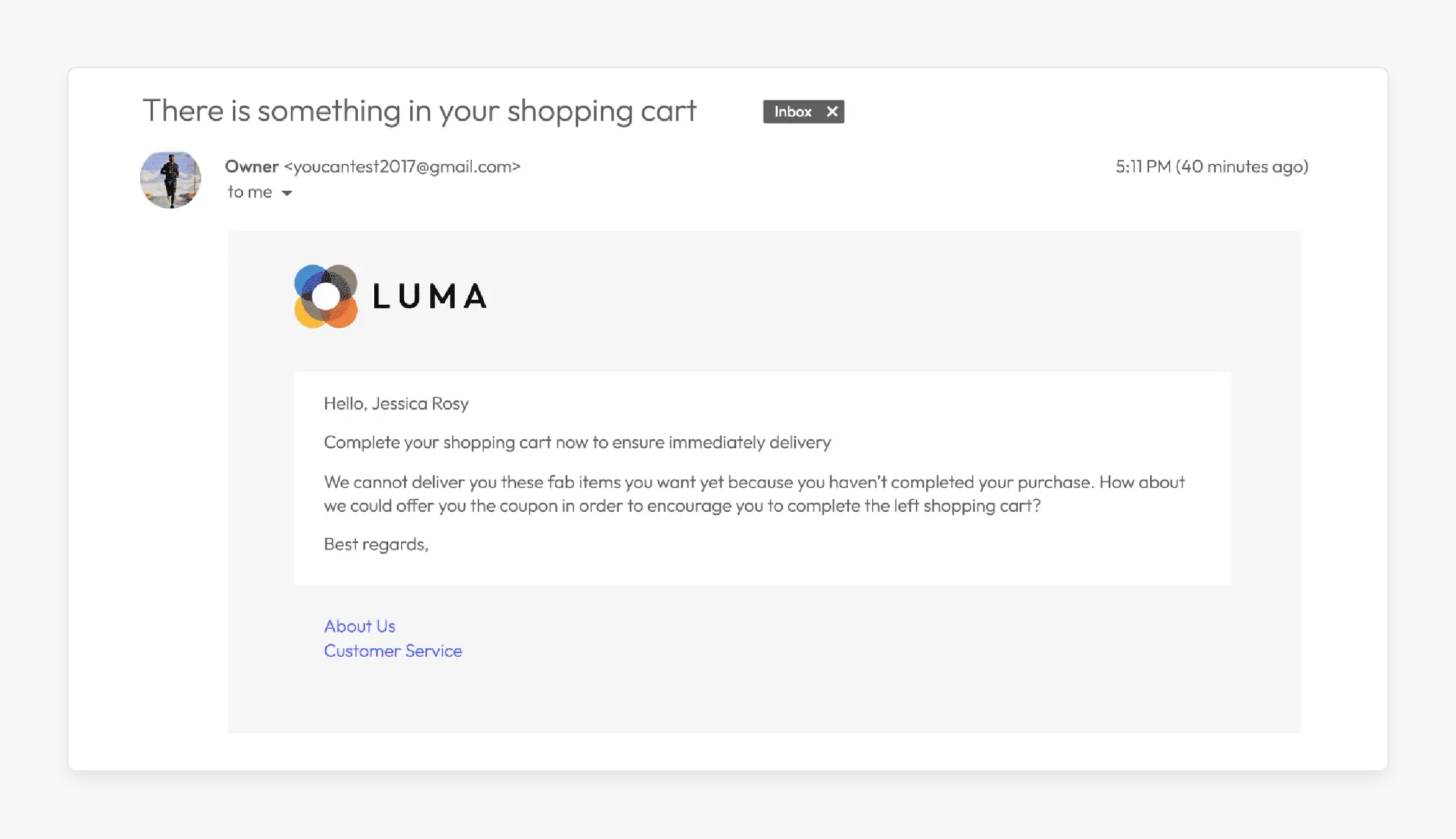
The follow up email Magento extension is a powerful tool for automating personalized email campaigns based on customer behavior.
Magento 2 follow up email extension allows store owners to send targeted email campaigns, such as:
-
Magento 2 Abandoned cart emails
-
Special offers or coupon codes
-
Product recommendations
Specific actions or events like abandoned carts or customer inactivity trigger these. The customizable templates and segmentation options of a follow up email for Magento 2 allow businesses:
-
Re-engage customers
-
Boost sales
-
Improve customer loyalty
The extension also provides performance tracking to monitor email open rates and conversions. It helps store owners optimize their marketing strategies and increase conversions effectively.
How Does the Follow Up Email Magento Extension Work?
1. Event Setup
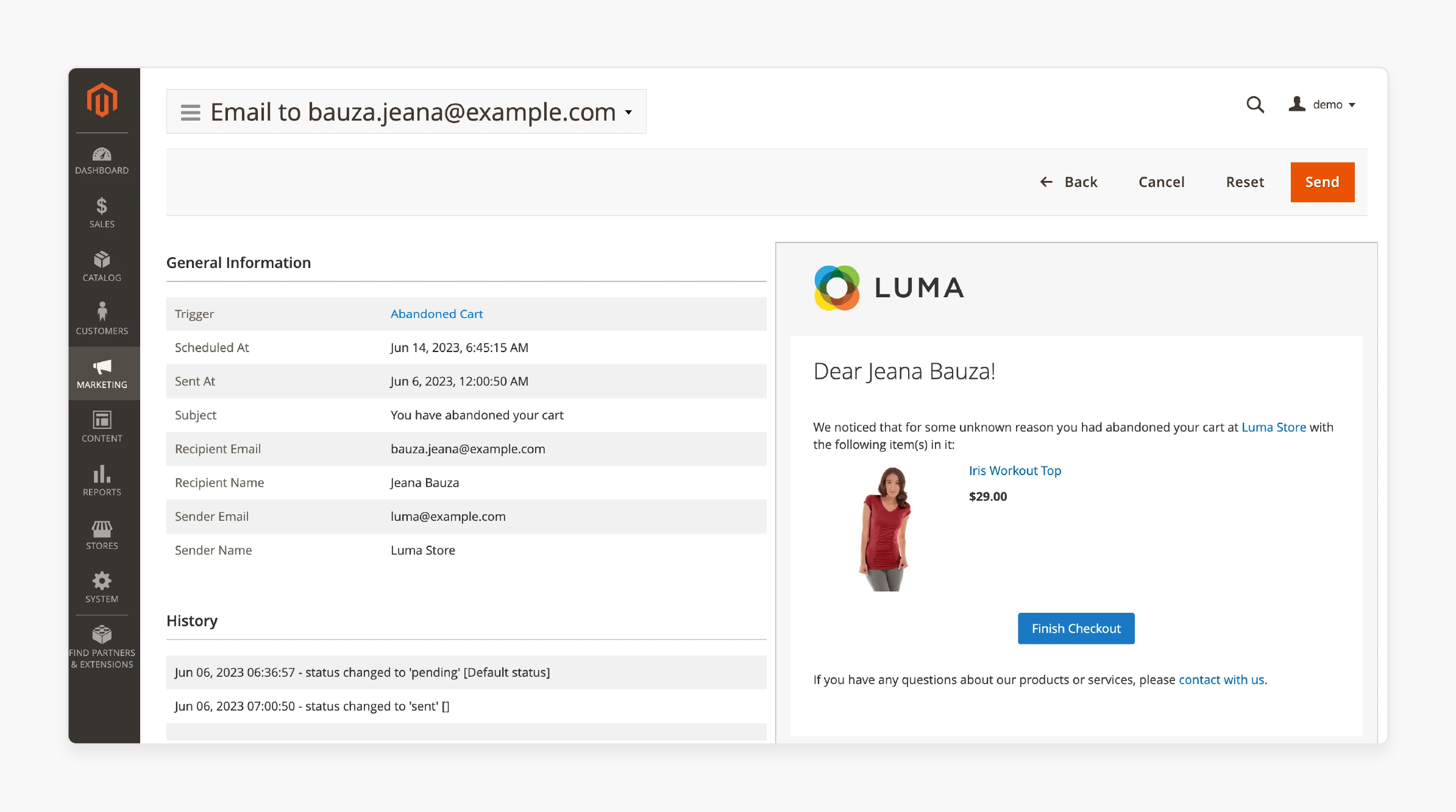
Configure the events that will trigger the follow-up emails. You can define specific customer actions or behaviors that will automatically activate an email sequence.
Common events include:
-
Cart abandonment: If a customer adds products to their cart but doesn’t complete the checkout process.
-
Order placement: Sending thank-you emails or requesting product reviews after a purchase.
-
Customer inactivity: Reaching out to customers who haven’t made a purchase or logged in for a certain period.
-
Special occasions: Emails triggered by birthdays, anniversaries, or other personalized events.
2. Email Templates
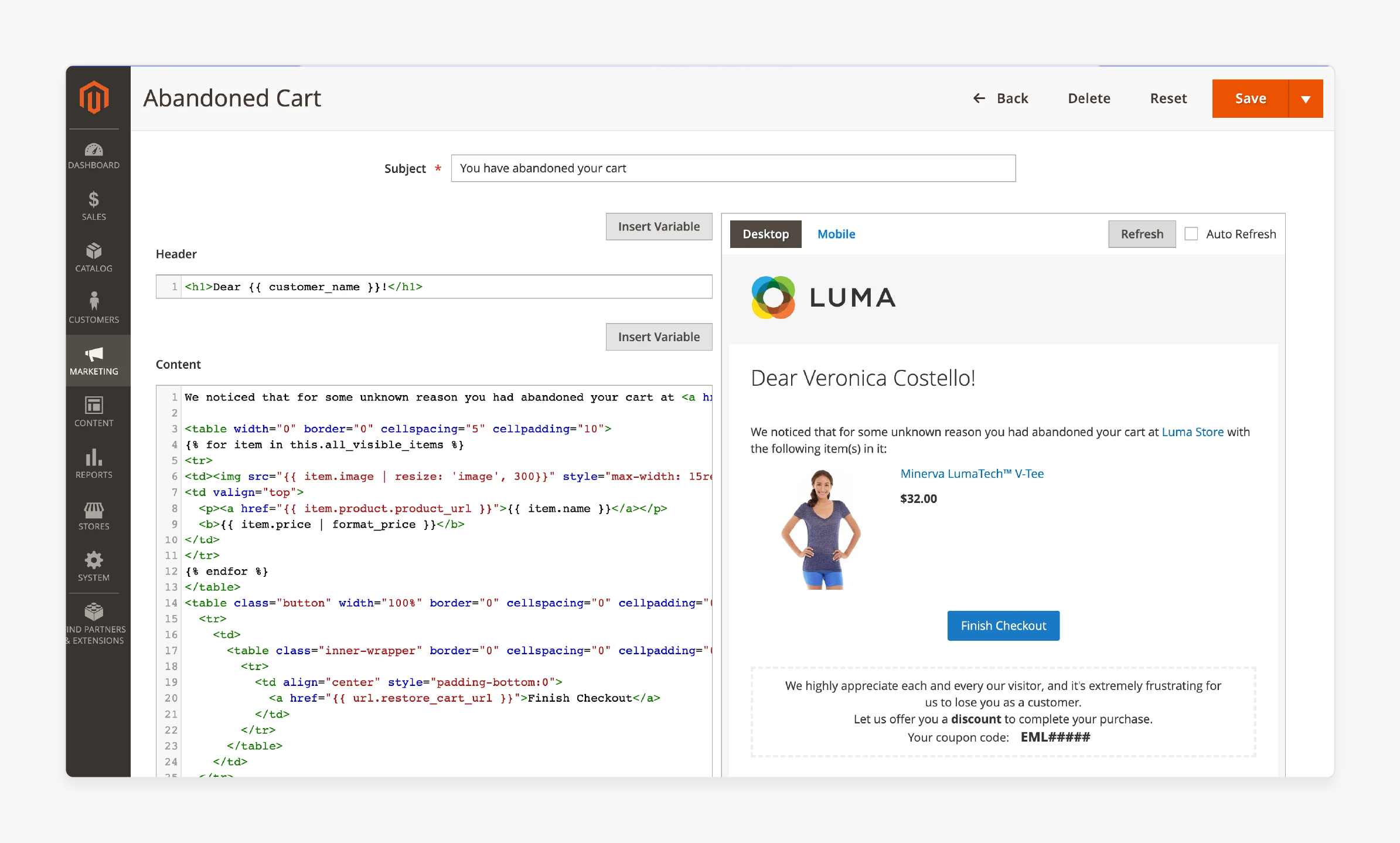
Create customized email templates for each event. The extension provides an editor where you can design email content with:
-
Branding elements: Ensure your emails reflect your store’s branding with:
1. Custom logos
2. Colors
3. Styles
-
HTML or plain text support: Choose whether to send HTML emails with rich content or simpler plain text emails.
Emails tailored to the individual recipient improve the chances of conversion and engagement.
3. Automated Triggers
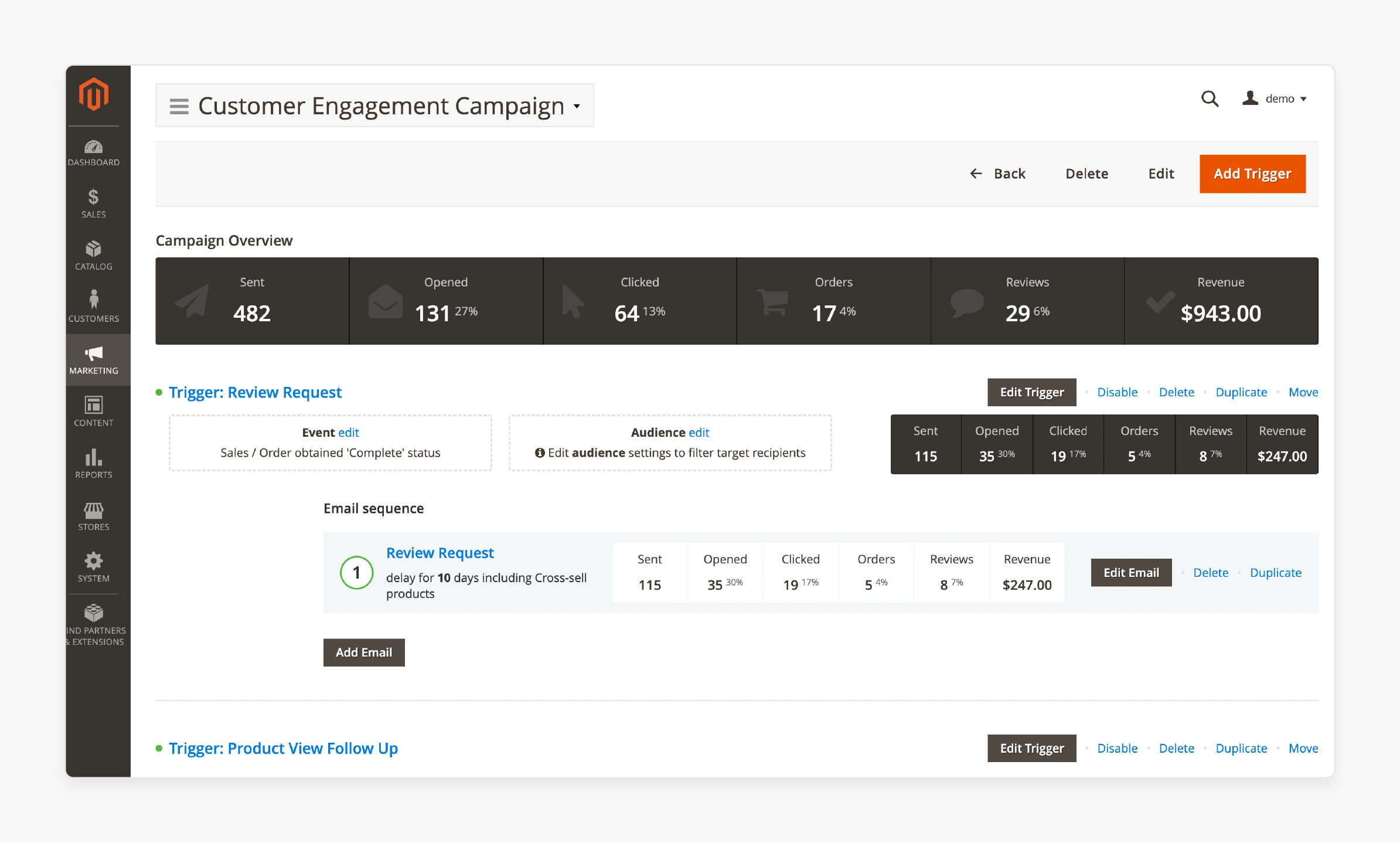
When the conditions for a trigger are met, the extension can automatically send an email chain.
For example:
-
If a customer abandons their cart, a reminder email might be sent within a set time.
-
If a customer hasn’t purchased in 30 days, an inactivity email could be triggered. It encourages them to return with a discount.
These triggers ensure that emails are sent at the right moment. It is based on the customer’s interaction with your store.
4. Scheduling & Frequency Control
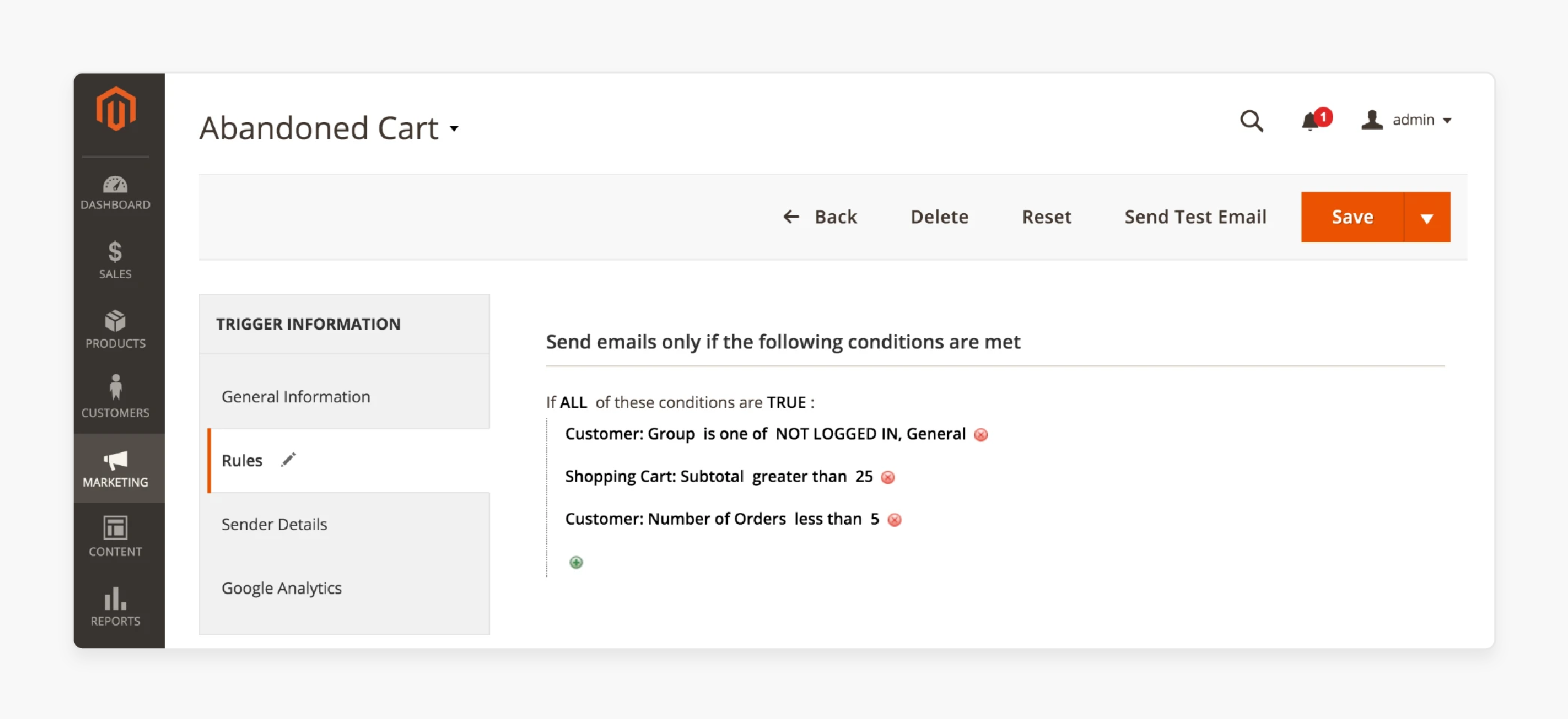
You have full control over when and how often follow-up emails are sent.
For example:
-
Set emails to be sent immediately after an event, a thank-you email after a purchase. Send emails automatically with a delay, like 48 hours after cart abandonment.
-
Limit how often a customer receives follow-up emails to avoid spamming them. You can set rules such as "Only one email every 7 days" or "No more than 3 emails per campaign."
The control ensures that customers aren’t overwhelmed. It still keeps your brand popular.
5. Integration with Discounts & Promotions
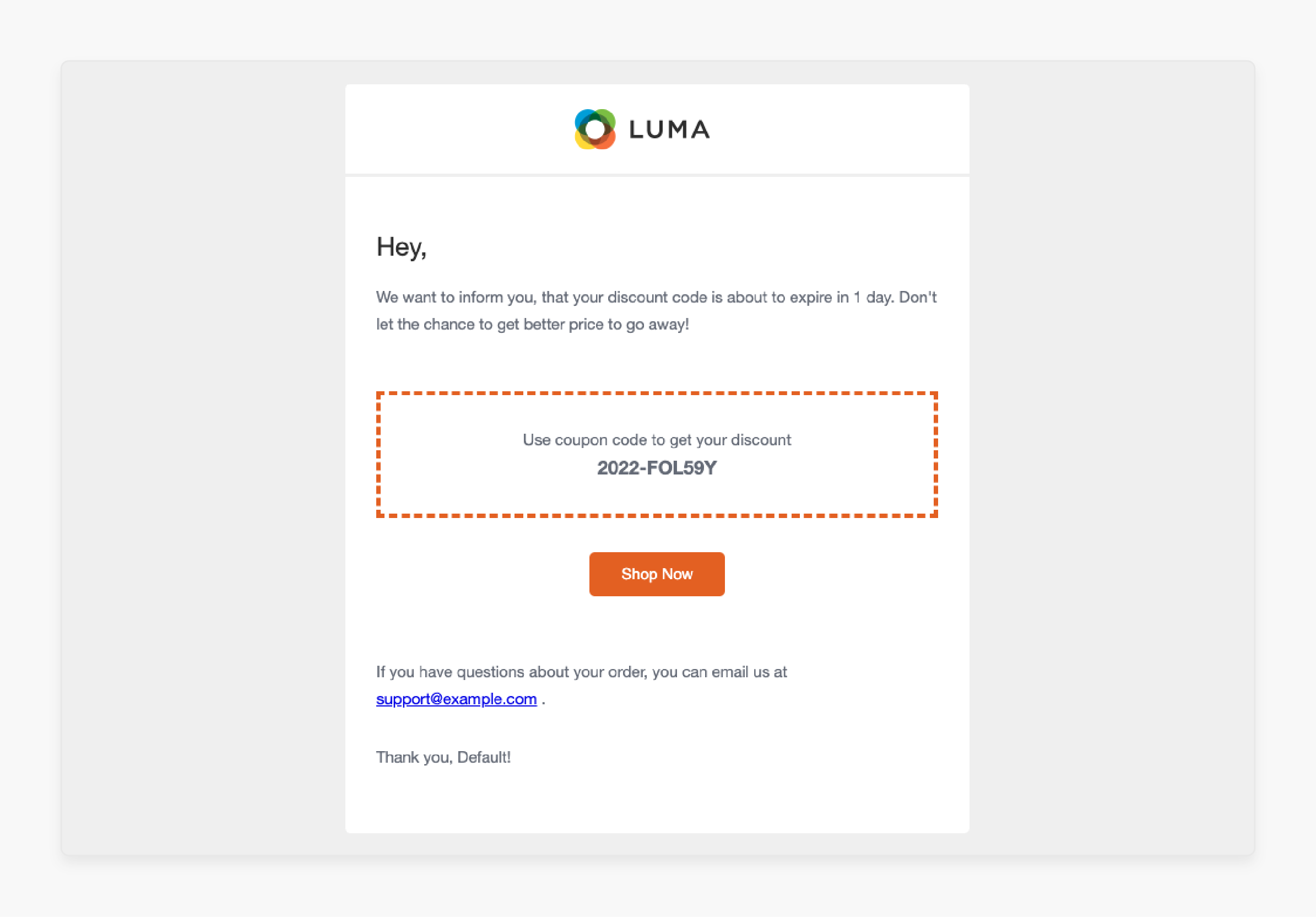
You can re-engage customers through special offers. The extension enables you to:
-
Easily insert unique or general coupon codes into follow-up emails.
-
Create urgency by sending limited-time offers. It encourages faster actions like completing a purchase.
-
Suggest related products and include deals. It drives customers to buy more items.
These offers can provide the extra incentive customers need to return to your store or finalize their purchases.
Types of Follow-up Emails Sent Using the Follow Up Email Magento Extension
| Types of Follow Up Emails | Explanation |
|---|---|
| 1. Order Confirmation & Post-Purchase Emails | These are automatically sent after a customer completes a purchase to confirm their order. Follow-up post-purchase emails can request product reviews. It offers related product recommendations or suggests upsells. |
| 2. Product Review Request Emails | These are sent a few days after a customer has received their order. It encourages them to leave a review for the purchased product. These emails often include a link to the product page for easy access to the review form. |
| 3. Reactivation Emails | These are sent to dormant customers who haven’t made a purchase or engaged with the store in a long time. These emails reignite interest by offering exclusive deals or showcasing new products. |
| 4. Order Follow-Up or Cross-Sell Emails | These are sent after a purchase to recommend related or complementary products. It is based on the customer's order history. These emails increase the customer’s lifetime value by encouraging additional purchases. |
| 5. Event-Based Emails | These are sent based on specific events. These include when a customer signs up for an account, subscribes to the newsletter, or reaches a certain loyalty milestone. These emails can be used to thank customers, welcome them to the store, or offer exclusive rewards. |
| 6. Subscription Renewal or Reminder Emails | These emails remind customers of upcoming renewals or subscription expirations. They often include details about their subscription plan and any relevant offers or upgrades. |
| 7. Wishlist Reminder Emails | These are sent to customers who have added items to their wishlist. They haven’t moved forward with a purchase. These emails can remind them about the items and potentially offer a discount to encourage the purchase. |
| 8. Back-in-stock or Price Drop Alerts | These are sent to customers who showed interest in a product that was out of stock or is now available at a discounted price. These emails notify customers when their desired product is back in stock or when its price has been reduced. |
| 9. Newsletter Welcome Emails | These are sent when a customer subscribes to your store’s newsletter. These emails typically include a welcome message or an overview of what to expect from the newsletter. The email also sometimes offers a discount or thanks them for signing up. |
| 10. Upsell and Cross-Sell Emails | These are sent after a customer purchases a product. It suggests complementary or higher-value products. It increases the average order value by encouraging additional or upgraded purchases. |
How to Personalize Follow-up Emails Using the Follow Up Email Magento Extension?
1. Segmentation for Targeted Emails
-
The extension enables you to personalize follow-up emails. It is by dividing customers into segments based on their behavior or demographic information.
-
The extension eanbles you to target specific groups, such as:
1. Purchase frequency: Send different messages to frequent buyers vs. one-time purchasers.
2. Geographic location: Tailor emails with location-specific offers, such as local shipping promotions.
3. Customer activity: Segment based on how active or inactive the customer has been. It is done by sending re-engagement emails to inactive customers.
4. Order value: Send personalized offers or thank-you emails to customers who spend above a certain threshold.
The segmentation ensures that each email is relevant to the recipient. It improves the likelihood of engagement.
2. Personalized Product Recommendations
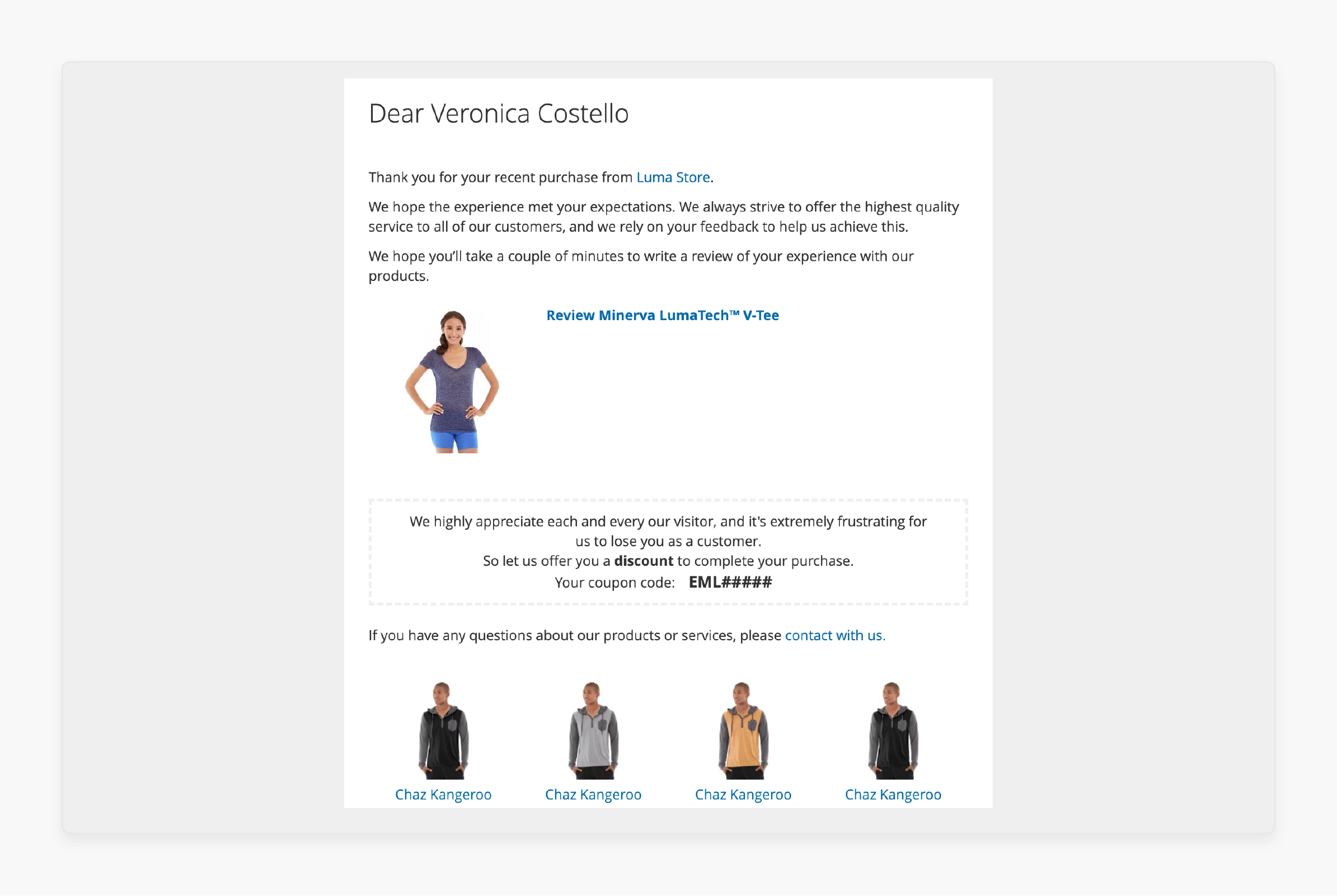
-
You can incorporate personalized product recommendations in the follow-up emails.
-
The automatic email module suggests products based on the customer’s previous purchases or browsing history.
1. Related products: Suggest items related to what the customer previously bought.
2. Best sellers or new arrivals: Display the most popular or newest products based on the customer’s browsing behavior.
3. Complementary products: Upsell or cross-sell products that go well with their past purchases.
3. Tailored Email Content Based on Behavior
-
Create different campaigns tailored to specific customer actions, such as:
1. Cart abandonment: Remind customers of the exact products left in their cart. You can also offer a discount or free shipping to entice them back.
2. Post-purchase follow-ups: Recommend products that complement what they recently purchased. You can also invite them to leave a product review.
3. Re-engagement emails: Offer special promotions to encourage customers to return. It is for those who haven’t visited your store in a while.
4. Personalized Timing
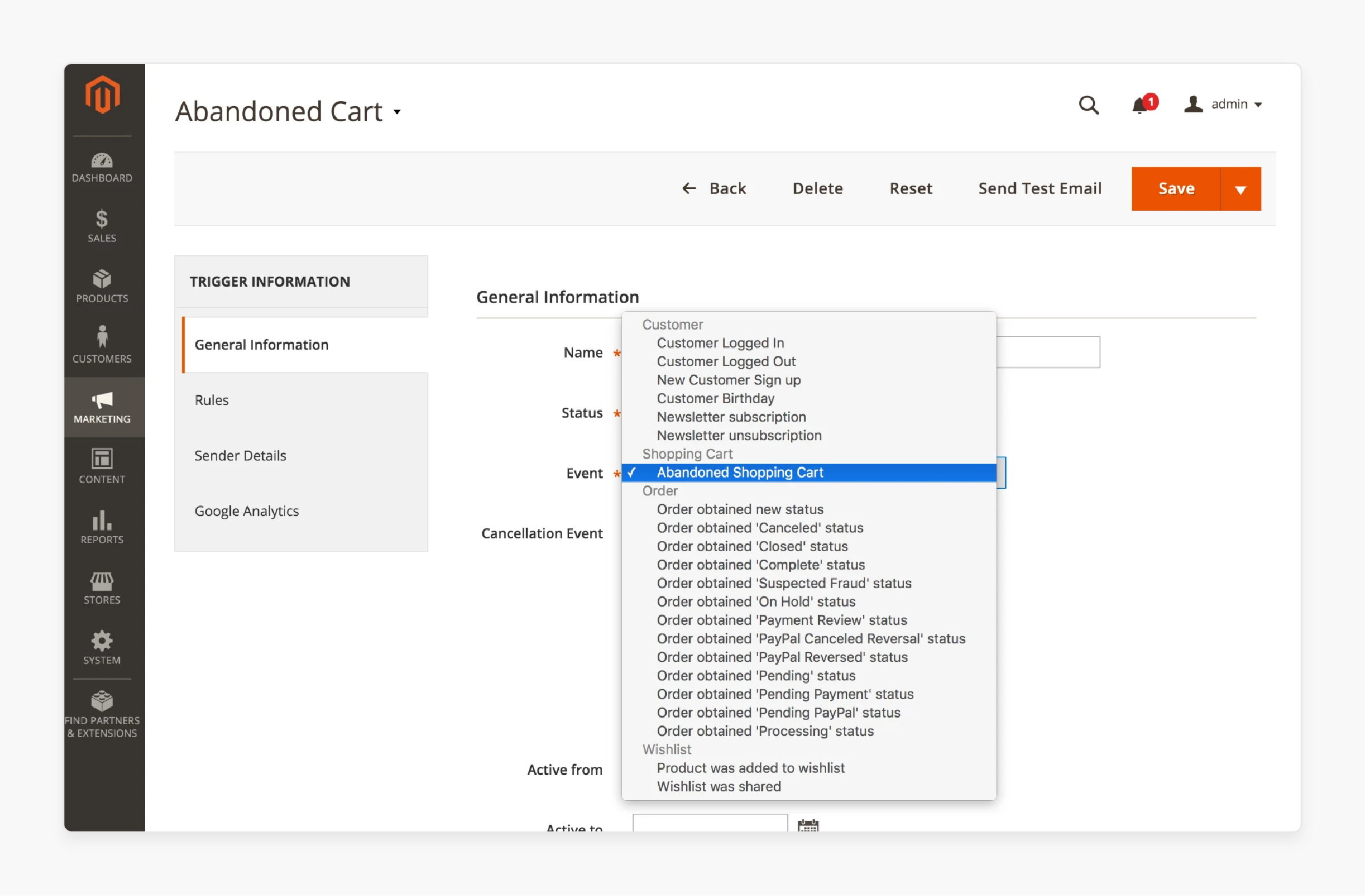
-
The follow-up email extension enables you to set the timing of emails. It is based on customer actions.
-
You can:
1. Schedule follow-up emails after a specific event, such as 24 hours after cart abandonment or a week after purchase. It makes the outreach feel timely and relevant.
2. Send birthday or anniversary emails on specific dates to make the interaction feel personal and thoughtful.
5. Personalized Design Elements
-
Use the branding and design features within the extension to create visually engaging, branded email templates. These are tailored to the customer.
-
For instance:
1. Design emails that match your store’s branding with custom colors, logos, and fonts.
2. Create unique content blocks that are only visible to certain segments. It includes adding special banners or offers for high-value customers.
6. Contextual Follow-Up
-
The context of the customer’s journey can be integrated into emails:
1. Send thank-you emails after purchases or "we miss you" emails after long periods of inactivity.
2. You can also send emails for wishlist items that are back in stock.
3. Mention previous orders, highlight their favorite items, and recommend similar ones.
4. Remind customers of their earned points or offer special rewards. It is based on their loyalty status.
5. Celebrate milestones like the customer’s first purchase, annual membership anniversaries, or long-time loyalty.
7. Language and Tone Customization
-
Personalize not only the content but also the tone and language based on customer behavior:
1. Use a more premium, formal tone, offering exclusive VIP experiences or offers. It is for high-spending customers.
2. Use a friendlier, more casual tone with fun, engaging copy to maintain the interest of casual customers.
How to Track and Analyze the Performance of Follow-up Email Campaigns?
1. Set Clear Campaign Goals
-
Define what success looks like for your follow-up emails.
-
Common goals include:
1. Increasing conversions
2. Improving customer retention
3. Recovering abandoned carts
2. Use Built-in Magento Email Reports
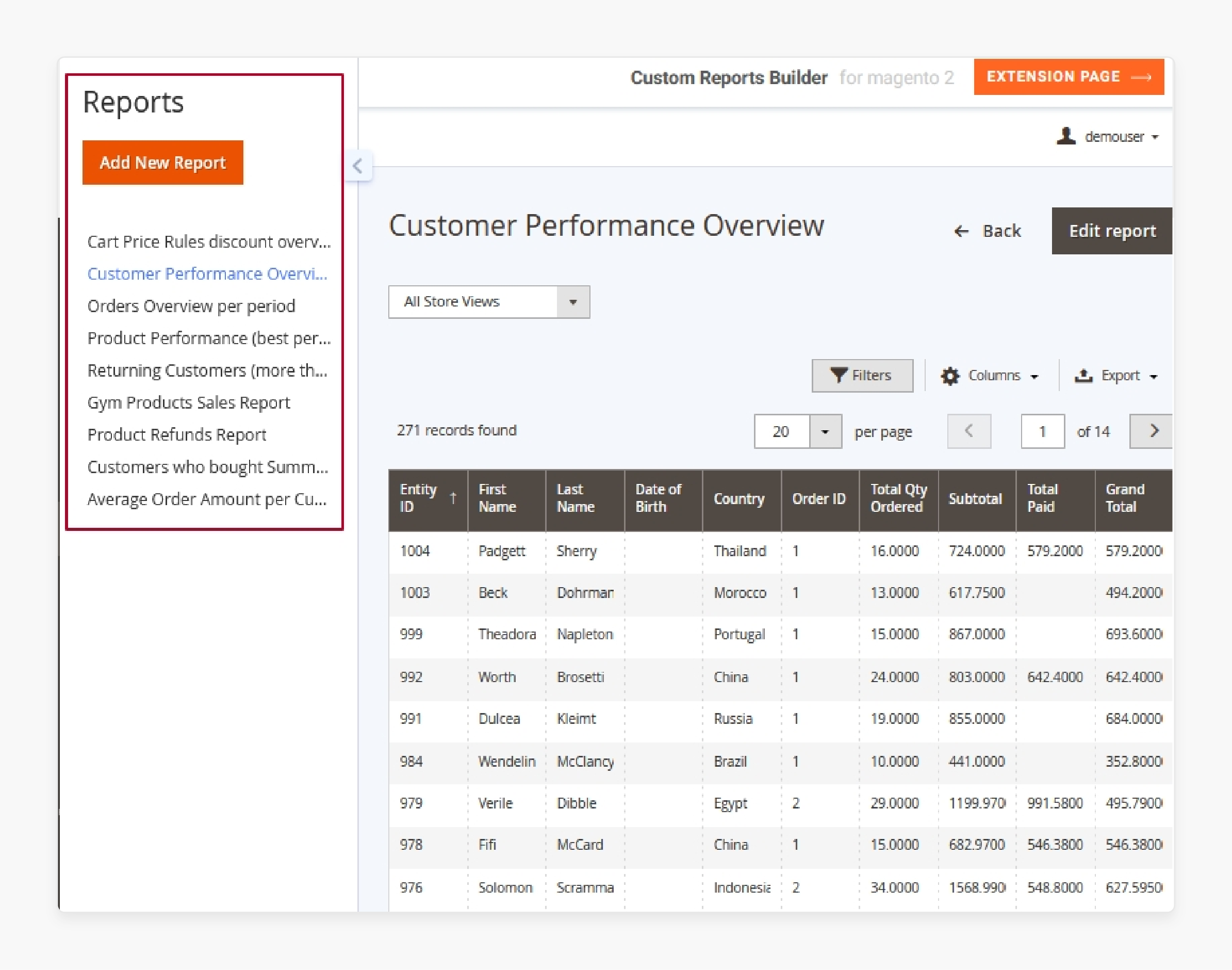
-
Magento 2 has built-in email reporting tools.
-
Access reports by navigating to Marketing > Communications > Email Reports.
-
Track the basic metrics, such as:
1. Delivery rate: How many emails were successfully sent.
2. Open rate: Percentage of recipients who opened the email.
3. Click-through rate (CTR): Number of clicks on links within the email.
4. Bounce rate: Emails that didn’t reach the recipient's inbox.
3. Integrate with Google Analytics
-
Use UTM parameters in your email links to track campaign performance in Google Analytics.
-
Monitor goals and conversions associated with the email traffic.
-
Look at specific metrics such as:
1. Conversion rate: How many customers took the desired action after opening the email.
2. Time on site: How long users stay on your site after clicking on an email link.
3. Pages per session: Average number of pages viewed per session from email traffic.
4. Third-Party Email Marketing Extensions
-
If you need more in-depth analysis, consider using third-party tools. These include Mailchimp for Magento 2 or Dotdigital Engagement Cloud.
-
These tools often provide additional insights, such as:
1. A/B testing results: Which email version performs better.
2. Revenue per email: How much each email generated in sales.
3. Segment-specific performance: Analyze performance based on customer groups.
5. Monitor Unsubscribe Rate
-
High unsubscribe rates may signal that your follow-up emails aren’t delivering value.
-
Keep an eye on this metric. You can also adjust your content accordingly to retain subscribers.
6. Assess Timing and Frequency
-
Review the performance based on when the follow-up emails are sent.
-
Test different time intervals after specific actions. These include a purchase or a cart abandonment.
-
Avoid sending too many follow-ups to prevent overwhelming your customers.
7. Analyze Revenue Attribution
-
Track how much revenue is generated directly from your follow-up emails.
-
Magento can attribute sales to specific email campaigns if your email platform is properly integrated.
FAQs
1. How does the follow-up email Magento extension update customers on order status?
The extension automates email notifications to keep customers informed about their order status. You can set custom email templates for each stage of the order process. It helps improve customer experience by providing timely updates.
2. Can the follow-up email Magento extension integrate with Google Analytics?
The extension integrates with Google Analytics to track the performance of your follow-up emails. You can monitor open rates and conversions directly from your analytics dashboard. It provides valuable insights for optimizing email campaigns.
3. Is there a user guide for the follow-up email Magento extension?
A detailed user guide is available. It offers step-by-step instructions for free installation, configuration, and customization. It helps you navigate through all features and settings. You can access the user guide directly from the extension's documentation.
4. Can I send a test email using the follow-up email Magento extension?
The extension allows you to send test emails before activating your campaigns. It helps verify your email design and content. Sending a test ensures everything appears correctly for customers.
Summary
Follow up email Magento 2 extension helps store owners automate and personalize email marketing based on customer behavior. The article uncovers several key features of the extension, including:
-
Abandoned shopping cart reminder sends reminders to recover lost sales.
-
Actions like purchases or inactivity trigger event-based triggers.
-
Emails are personalized using customer-specific details.
-
Performance tracking monitors open rates and click-through rates.
Boost your sales and customer engagement with the follow up email Magento extension. Pair it with managed Magento hosting for optimal performance.




